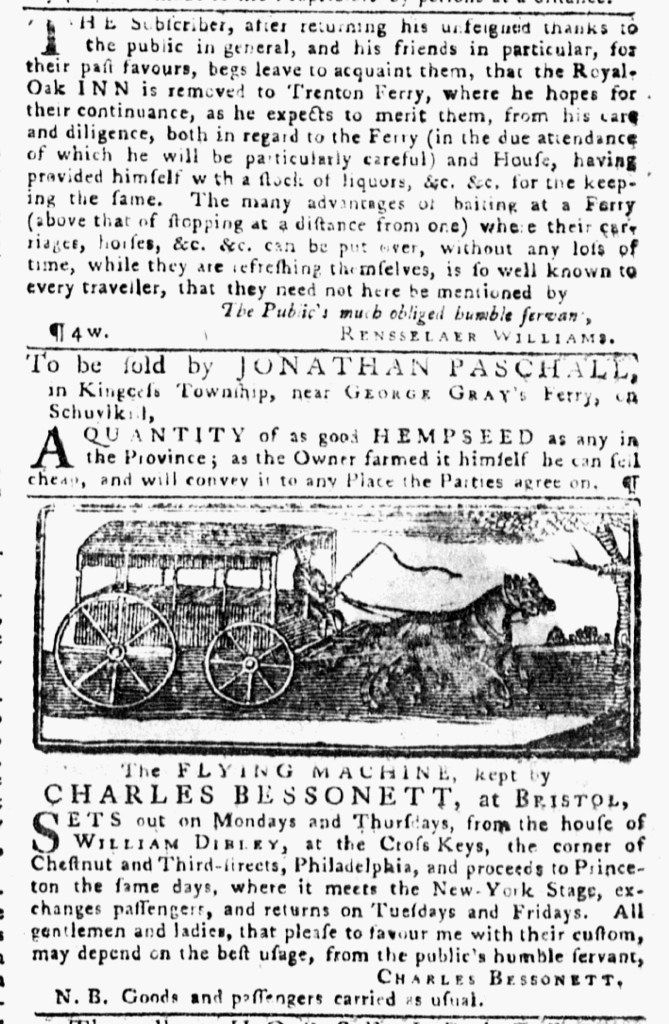What was advertised in a colonial American newspaper 250 years ago today?

“The Royal-Oak INN is removed to Trenton Ferry.”
“The FLYING MACHINE … SETS out on Mondays and Thursdays.”
Several kinds of documents testify to the transportation infrastructure in the colonies during the era of the American Revolution. Almanacs often included information about roads and ferries that connected cities and towns. Newspaper advertisements gave details about the stagecoaches that transported passengers and packages from town to town as well as the inns and taverns that provided services along the way.
Such was the case in the April 7, 1773, edition of the Pennsylvania Gazette. In one advertisement, Rensselaer Williams promoted the “Royal-Oak INN” near the Trenton Ferry that connected the New Jersey and Pennsylvania sides of the Delaware River. Williams previously operated the inn at another location, but recently “removed” to a new location for the convenience of his guests. He hoped that “the public in general, and his friends in particular” would express their appreciation for this new arrangement by continuing their patronage. He pledged his “care and diligence” in operating both the inn (“with a stock of liquors”) and the ferry. Williams asked prospective customers to consider the “many advantages of baiting at a Ferry.” Modern readers may not be familiar with the term that Williams used, but eighteenth-century readers would have known that “to bait” referred to travelers, as the Oxford English Dictionary indicates, “to stop at an inn, originally to feed the horses, but later also to rest and refresh themselves; hence, to make a brief stay or sojourn.” By “baiting at a Ferry,” Williams declared, travelers saved time compared to making additional stops to refresh themselves and take care of horses and carriages elsewhere.
In another advertisement, Charles Bessonett similarly emphasized efficiency in marketing the stage service he operated for passengers and goods. He named his stage the “FLYING MACHINE” to suggest how quickly it covered the distance between Philadelphia and Princeton. Bessonnett also provided a schedule to demonstrate the speed of the journey to prospective customers. The stage departed from Philadelphia on Mondays and Thursdays and returned from Princeton on Tuesdays and Fridays. In Princeton, the Flying Machine met a stagecoach from New York and exchanged passengers. Bessonnett collaborated with another operator in connecting the two cities.
Colonial printers did not usually organize or classify newspaper advertisements. That an advertisement for the Royal Oak Inn and Trenton appeared in close proximity to an advertisement for the Flying Machine, separated only by a notice offering hempseed for sale, happened more by coincidence than by design. Still, the two advertisements gave readers of the Pennsylvania Gazette information about some of the options available to them if they wished to travel to New Jersey or New York or even continue on to New England.
